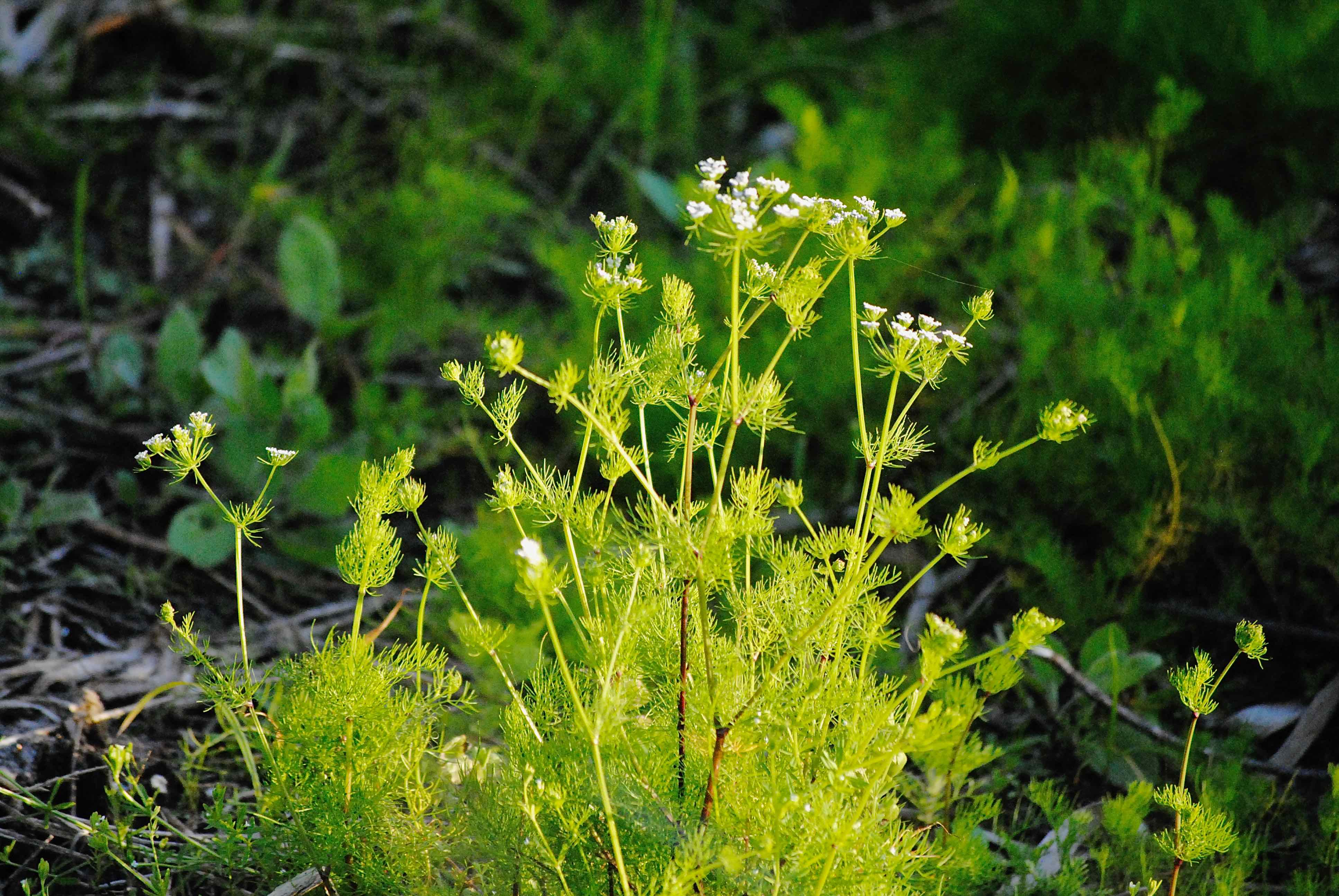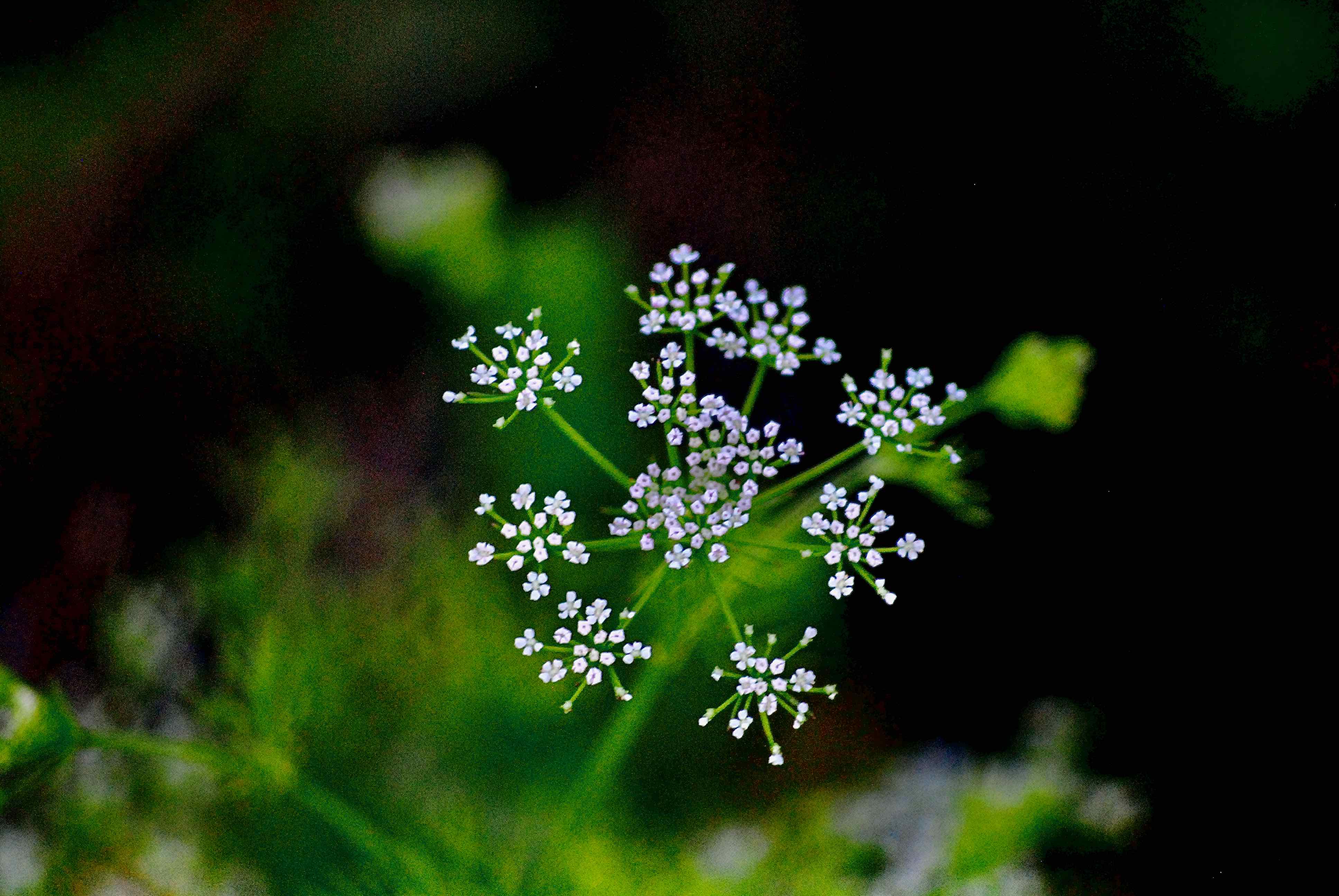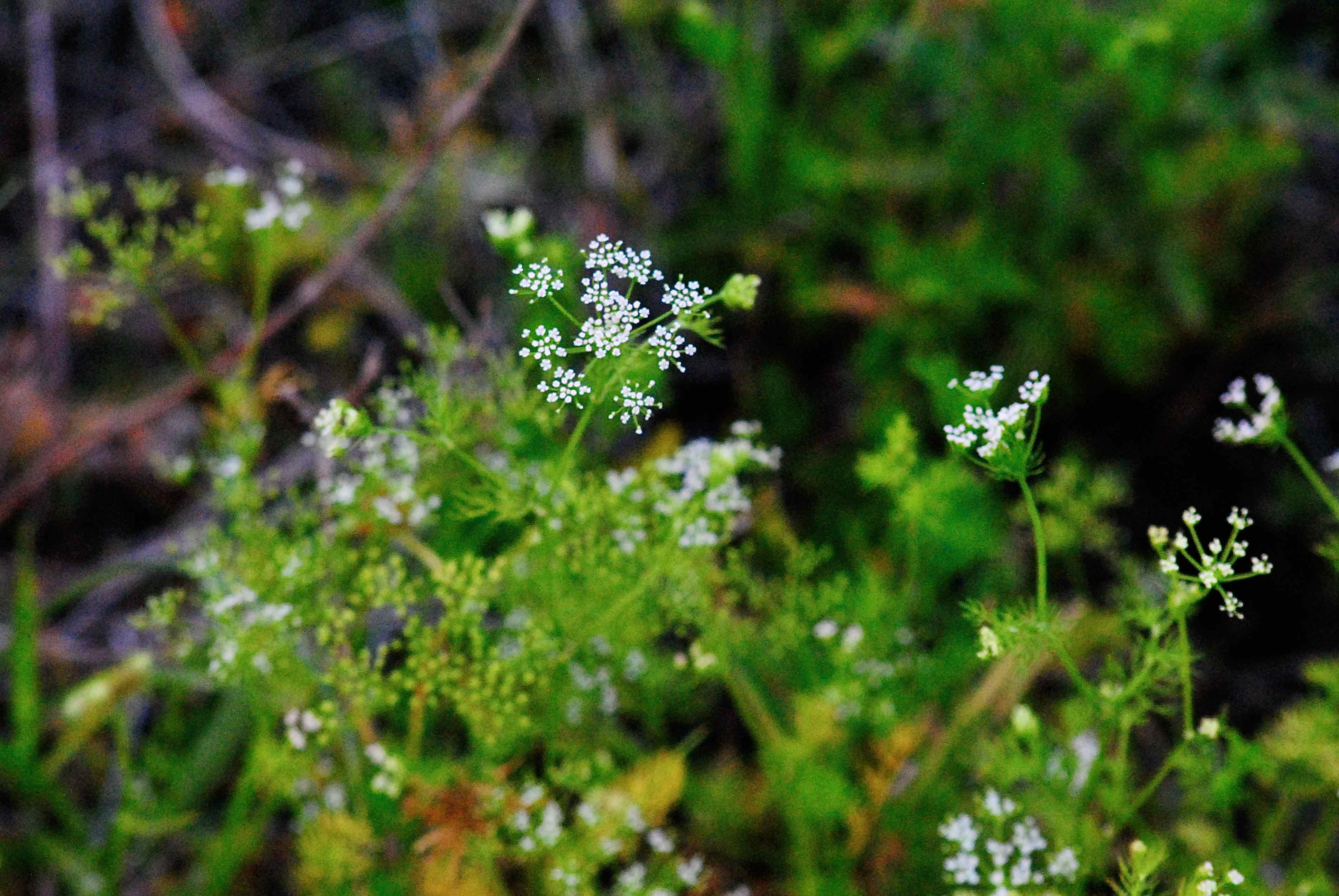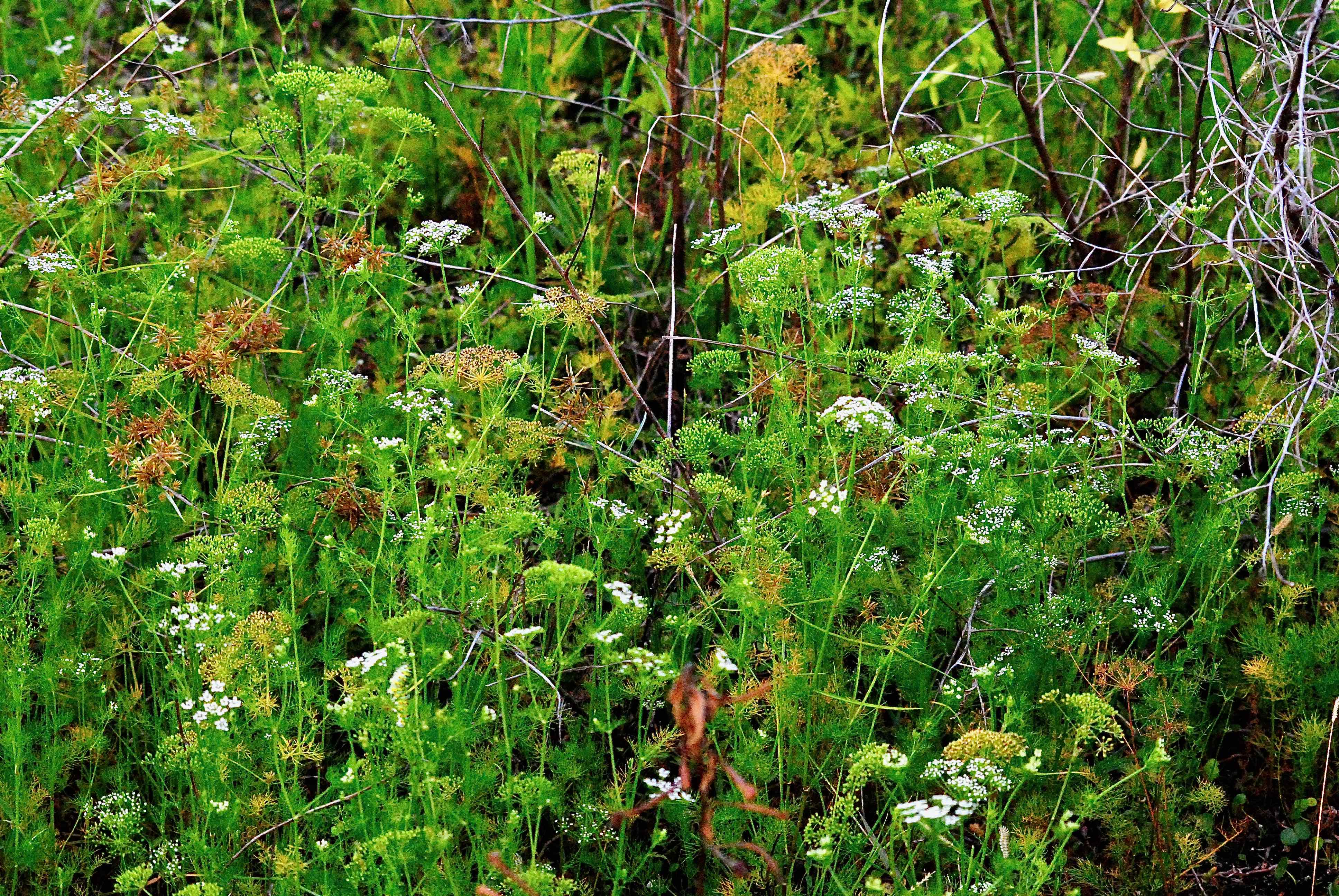
Mock bishopweed, photographed at Yamato Scrub Natural Area, Boca Raton, Palm Beach County, in April 2014.
Mock bishopsweed, Ptilimnium capillaceum, has a familiar look to it, and were not talking about whatever resemblance it might bear to the real bishopsweed (actually several plants share that name).
No, we're talking something much more familiar. And we have to confess we didn't see it at all until we did a little research. Mock bishopsweed is in the Apiaceae, or carrot family, which includes fennel and dill. And now that we know, it does look quite a bit like dill.
Apiaceae is known for plants that have a cluster of small flowers atop a specialized head called an umbrel. Carrots have them, dill has them, fennel has them and so does mock bishopswood. The crushed leaves of the plant are also quite aromatic just like its kitchen herb kin. Unlike its kin, this plant is not edible.
Mock bishopsweed grow to a maximum of about 18 inches tall and has short, whispy compound leaves. The flowers are white and tiny, but appear in large numbers that help make up for their lack of size. They bloom year round. Like other "wild carrots" it has a deep taproot, which some say helps make the plant drought-tolerant once it is established. Others say not so much, that it needs to have wet feet in order to survive. Primary habitats include marshes, swamps and wet, disturbed places. It's always found in or near water. It is a native of the Sunshine State.
Some sources say it is salt tolerant, and that favorite habitats include brackish or salt marshes and intertidal flats. Others, including the Institute for Regional Conservation in Delray Beach, say its salt tolerance is minimal.
Its range includes much of eastern and central U.S. as far north as New York and Massachusetts and as far west as South Dakota, Kansas and Texas. Kentucky lists it as threatened and Rhode Island considers it of special concern. It apparently has been displaced from Pennsylvania. It's also found in parts of the Caribbean. It is found throughout Florida as far south as Miami-Dade County, while skipping Monroe altogether. In places, it's quite common, but the Institute for Regional Conservation considers it rare in this end of the state.
Mock bishopsweed is host to the eastern black swallowtail butterfly, making it an attractive plant for butterfly gardeners. Females of the species lay their eggs on young foliage or occasionally the flowers. It's also used in natural landscapes, restorations and wet gardens. One upside/downside to the plant: it heavily reseeds itself, so replanting it isn't necessary. Unfortunately, it also makes it weedy.
Other common names and spellings for mock bishopsweed include: Herbwilliam, Atlantic mock bishop's weed and mock bishop's weed. Again, it is a member of Apiaceae, the carrot family.
Click on photo for larger image
Links for Mock Bishopweed



